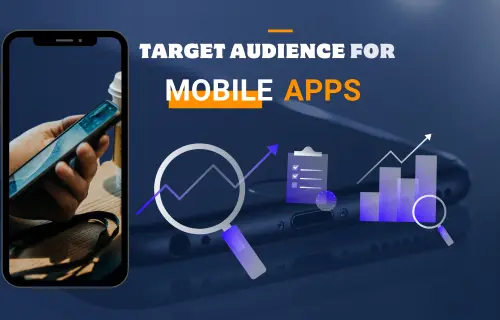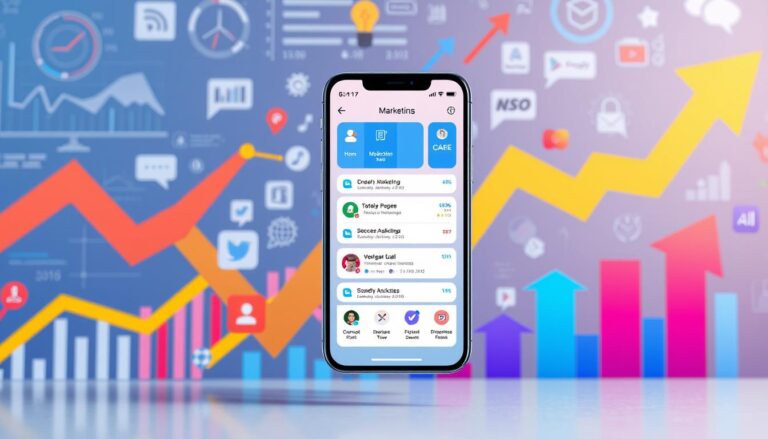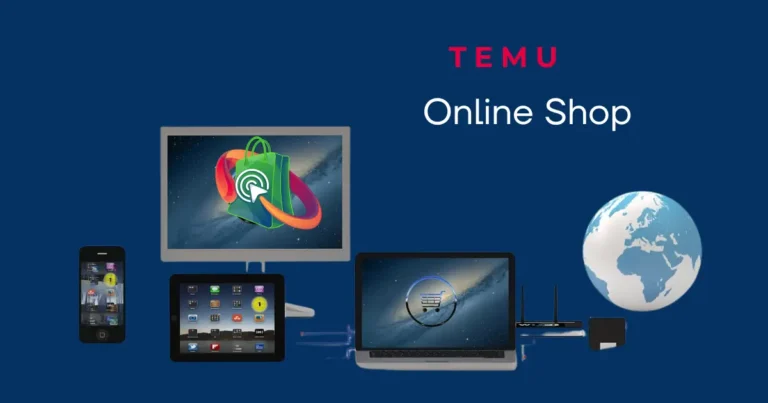Mastering Mobile App Tracking: Essential Tools, Powerful Types, and Inspiring Real-Life Use Cases
Mobile app tracking is a crucial element of modern app development and marketing. It involves collecting and analyzing data on user behavior, app performance, and campaign effectiveness. By leveraging mobile app tracking, businesses can optimize user experiences, improve app functionality, and maximize return on investment (ROI) in marketing campaigns.
This comprehensive guide explores the significance of mobile app tracking, how it works, popular tools and techniques, real-world use cases, challenges, and best practices to ensure success.
Table of Contents
Why Mobile App Tracking Matters
Mobile app tracking is a cornerstone of successful app development and marketing strategies. It allows businesses to collect, analyze, and utilize valuable data to make informed decisions that drive user satisfaction, engagement, and profitability. Here’s why mobile app tracking is essential:
1. Understanding User Behavior
App tracking Tools provide detailed insights into how users interact with your app. It reveals key behaviors, such as the most-used features, session lengths, and drop-off points. These insights enable app developers and marketers to identify what works and what doesn’t, ensuring they can prioritize features that resonate with users. For instance, if users consistently abandon the app after reaching a specific screen, tracking data can pinpoint this pain point for improvement.
2. Enhancing User Engagement
Tracking data helps businesses understand what keeps users engaged. By analyzing metrics like time spent on specific pages, frequency of app usage, and in-app purchases, developers can fine-tune the user experience. For example, apps like Spotify use tracking to deliver personalized content recommendations, keeping users engaged for longer periods and fostering loyalty.
3. Measuring Campaign Effectiveness
Attribution tracking is a powerful tool for understanding which marketing channels are most effective. By identifying the source of app installs or purchases, businesses can allocate their marketing budgets more efficiently. For example, if a social media campaign drives more installs than a search engine campaign, businesses can focus resources on the more effective channel.
4. Optimizing App Performance
Performance tracking ensures that technical issues, such as app crashes or slow load times, are identified and resolved quickly. A well-performing app leads to better user satisfaction and higher app store ratings, which can significantly impact download rates.
In essence, mobile app tracking is not just about collecting data—it’s about transforming that data into actionable insights to improve the user experience, enhance marketing strategies, and drive app growth.
How Mobile App Tracking Works
Mobile app tracking is a sophisticated process that involves collecting, analyzing, and interpreting data about user behavior, app performance, and marketing effectiveness. It relies on various technologies and methodologies to provide actionable insights that drive app improvements and business growth.
1. Data Collection Technologies
- Software Development Kits (SDKs): SDKs are integral to mobile app tracking. These are code libraries integrated into the app to collect data on user interactions, such as clicks, page views, or purchases. Tools like Google Analytics for Firebase and AppsFlyer rely heavily on SDKs.
- Cookies and APIs: Cookies track user behavior across platforms, while APIs (Application Programming Interfaces) enable apps to communicate with third-party tracking systems for seamless data exchange.
2. Key Tracking Metrics
Mobile app tracking focuses on gathering specific data points:
- User Sessions: Captures information about how long users spend on the app, helping to measure engagement levels.
- Events: Tracks specific user actions like button clicks, video views, or purchases.
- Attribution Data: Identifies the marketing channels, campaigns, or ads that drove users to download or interact with the app.
3. Analytics Platforms
Analytics platforms serve as the backbone of mobile app tracking. Tools like Firebase, Adjust, and Mixpanel aggregate and process raw data into actionable insights. These platforms often include dashboards and reporting features that allow businesses to visualize trends and patterns in user behavior.
4. Data Processing and Insights
Once data is collected, it is processed to uncover actionable insights. For instance, heatmaps might reveal areas of the app that users interact with the most, while funnel analysis can identify where users drop off during a specific process, like checkout.
In summary, mobile app tracking works by combining powerful technologies and analytics platforms to gather and interpret data. The insights derived enable businesses to refine app performance, tailor marketing strategies, and ultimately enhance user satisfaction.
Types of Mobile App Tracking
Mobile app tracking encompasses various methodologies to gather and analyze data about user behavior, app performance, and marketing impact. Each type of tracking serves a distinct purpose, enabling businesses to optimize their apps and strategies effectively. Here are the key types of mobile app tracking:
1. Event Tracking
They focuses on monitoring specific user actions within an app. Events can include button clicks, form submissions, product purchases, or any activity deemed important to business goals.
How it Works: Developers define events within the app’s code or through an analytics platform. For example, an e-commerce app might track events like “Add to Cart” or “Checkout.”
Benefits:
- Provides granular insights into user behavior.
- Helps identify the most popular features or workflows.
- Supports optimization of key user interactions to drive conversions.
2. Screen Tracking
Screen for tracking monitors how users navigate through the app’s interface. It tracks the time spent on each screen, the sequence of navigation, and exit points.
How it Works: Tracking software records transitions between screens or views within the app.
Benefits:
- Identifies the screens with the highest engagement.
- Reveals where users drop off, helping optimize the app’s design.
- Improves UI/UX by highlighting areas for improvement.
Example: A travel app might use screen tracking to analyze how users interact with the flight booking process.
3. Attribution Tracking
Attribution connects marketing campaigns to specific user actions, such as app installs or in-app purchases. It identifies which channels or campaigns are driving the most value.
How it Works: tools like AppsFlyer or Adjust assign unique identifiers to each marketing source, such as ads, emails, or social media campaigns.
Benefits:
- Determines the ROI of marketing efforts.
- Identifies high-performing channels for budget allocation.
- Reduces customer acquisition costs by focusing on effective campaigns.
4. Performance Tracking
They ensures that technical aspects of the app, like speed and stability, meet user expectations. It includes monitoring app crashes, load times, and memory usage.
How it Works: Tools like Firebase Crashlytics gather data on app errors and performance metrics.
Benefits:
- Ensures a smooth and seamless user experience.
- Helps diagnose and fix technical issues quickly.
- Boosts app store ratings by delivering a reliable app.
5. Funnel Tracking
Funnel maps out the steps users take to complete a specific action, like signing up or making a purchase.
How it Works: A funnel is predefined in the tracking platform, showing where users drop off in the process.
Benefits:
- Identifies bottlenecks in the user journey.
- Supports targeted improvements to increase conversion rates.
Each type of tracking provides unique insights that, when combined, create a comprehensive understanding of app performance and user behavior. By leveraging these tracking methods, businesses can enhance app functionality, boost user engagement, and maximize their marketing impact.
Tools and Platforms for Mobile App Tracking
A wide array of tools and platforms are available to help businesses track and analyze app performance, user behavior, and marketing impact. Each tool offers distinct features tailored to specific needs, from event tracking and analytics to attribution and performance monitoring. Here’s an in-depth look at the most popular mobile app tracking platforms:
1. Google Analytics for Firebase
Overview: Firebase is a free, comprehensive platform offered by Google for mobile app development and analytics. It tracks user behavior, app performance, and campaign effectiveness.
Key Features:
- Event tracking to monitor user interactions.
- Real-time analytics to identify trends quickly.
- Crashlytics for performance monitoring and debugging.
- Integration with Google Ads for seamless attribution tracking.
Best For: Developers and businesses seeking an all-in-one solution with strong analytics and performance monitoring.
2. AppsFlyer
Overview: AppsFlyer specializes in attribution tracking, helping businesses understand the effectiveness of their marketing campaigns.
Key Features:
- Multi-touch attribution to track users across channels.
- Fraud detection to prevent invalid data from ad networks.
- Deep linking to enhance user onboarding and re-engagement.
- Custom dashboards for detailed analytics.
Best For: Marketers focused on campaign performance and ROI.
3. Adjust
Overview: Adjust is another leading platform for attribution tracking and fraud prevention. Its advanced privacy features make it a favorite among businesses prioritizing data security.
Key Features:
- Secure attribution tracking compliant with GDPR and CCPA.
- In-app event tracking to monitor user actions.
- Fraud prevention tools to ensure data accuracy.
- Audience builder for targeted user segmentation.
Best For: Businesses needing secure tracking with robust analytics and fraud prevention.
4. Mixpanel
Overview: Mixpanel excels in advanced event tracking and user segmentation, offering businesses insights into user behavior at a granular level.
Key Features:
- Funnel analysis to identify drop-off points.
- Retention tracking to measure user engagement over time.
- Customizable dashboards for specific KPIs.
- Integration with third-party tools for seamless workflows.
Best For: Apps with complex user journeys that require detailed behavior analysis.
5. Flurry Analytics
Overview: Flurry is a free analytics platform from Yahoo, popular among smaller apps and startups.
Key Features:
- Detailed user session tracking.
- Demographics and user segmentation data.
- Real-time data on app usage trends.
- Simple integration with iOS and Android apps.
Best For: Small to medium-sized apps looking for a cost-effective solution.
Comparison Table
| Tool | Key Features | Best For |
|---|---|---|
| Firebase | Event tracking, crash reporting, real-time analytics | General app analytics and performance monitoring |
| AppsFlyer | Multi-touch attribution, fraud prevention | Campaign tracking and ROI |
| Adjust | Secure attribution, GDPR compliance | Data privacy and fraud prevention |
| Mixpanel | Advanced event tracking, funnels | Complex user behavior analysis |
| Flurry | Free, session tracking, demographics | Cost-effective tracking for startups |
By selecting the right mobile app tracking tool, businesses can gain critical insights to optimize their apps, improve marketing strategies, and deliver exceptional user experiences. Whether you need robust analytics, secure tracking, or attribution-focused insights, these platforms provide the capabilities to achieve your goals.
Privacy and Ethical Considerations in Mobile App Tracking
Privacy and ethical considerations are crucial in mobile app tracking to maintain user trust and comply with global data protection laws. As mobile apps collect sensitive user data, businesses must prioritize transparency and responsibility in how they gather, store, and utilize this information.
1. Importance of User Consent
Compliance with privacy laws like the General Data Protection Regulation (GDPR) in Europe and the California Consumer Privacy Act (CCPA) in the United States mandates explicit user consent for data collection. App developers must implement clear and concise consent forms that inform users about the data being collected, its purpose, and how it will be used.
2. Ethical Data Collection and Storage
Ethical tracking involves collecting only the data necessary for achieving specific goals and avoiding over-collection. Businesses should anonymize user data to protect individuals’ identities and store it securely to prevent breaches.
3. Transparent Privacy Policies
Comprehensive and accessible privacy policies foster trust by providing users with a clear understanding of their rights and how their data is managed.
4. Impacts of Non-Compliance
Failing to adhere to privacy regulations can result in hefty fines, reputational damage, and loss of user trust. Ethical tracking practices not only protect businesses legally but also contribute to long-term customer loyalty.
By respecting privacy and adopting ethical practices, businesses can build trust and foster stronger relationships with their users.
Real-Life Use Cases of Mobile App Tracking : Who, How, Why, and Feedback
Use Case 1: Spotify – Enhancing User Engagement with Event Tracking
- Who: Spotify, the global music streaming giant.
- How: Spotify implemented event tracking to monitor user actions such as song skips, playlist creation, and listening time.
- Why: To refine its recommendation algorithm and identify areas of user frustration.
- Feedback: Resulted in a 20% increase in user retention by offering tailored playlists and improved engagement metrics.
Use Case 2: Uber – Optimizing Rideshare Services with Attribution Tracking
- Who: Uber, the leading ride-hailing platform.
- How: Used attribution tracking to pinpoint which marketing campaigns generated the most app downloads and ride requests.
- Why: To allocate resources to the most effective ad campaigns and reduce acquisition costs.
- Feedback: Improved ROI by 35% and strengthened its global marketing strategy.
Use Case 3: Nike Run Club – Boosting User Retention with Performance Tracking
- Who: Nike Run Club, a fitness app for tracking running stats.
- How: Focused on performance tracking to detect app crashes and ensure smooth functionality during workouts.
- Why: To build user trust and enhance satisfaction.
- Feedback: Positive reviews surged on app stores, increasing downloads by 15%.
Use Case 4: Airbnb – Personalization Through Screen Tracking
- Who: Airbnb, the short-term rental marketplace.
- How: Used screen tracking to monitor how users interact with search filters and property listings.
- Why: To refine the app’s UI/UX and provide personalized results.
- Feedback: Boosted conversion rates by 25%, as users found desired properties faster.
Best Practices for Effective Mobile App Tracking
Implementing mobile app tracking effectively requires a strategic approach to ensure the data collected is actionable, accurate, and compliant with privacy standards. Here are the best practices for achieving optimal results with mobile app tracking:
1. Set Clear Goals and KPIs
Define specific objectives for tracking, such as increasing user engagement, reducing churn, or improving conversion rates. Identify key performance indicators (KPIs) that align with these goals, such as daily active users (DAUs), session duration, or in-app purchases. Clear goals ensure that tracking efforts remain focused and purposeful.
2. Choose the Right Tools
Select tracking tools and platforms that align with your business needs and app size. Tools like Google Analytics for Firebase or Mixpanel are ideal for general analytics, while AppsFlyer or Adjust are better suited for attribution tracking. Evaluate features such as integration capabilities, user-friendly dashboards, and scalability before choosing a platform.
3. Prioritize Data Privacy and Compliance
Ensure your app complies with data protection laws like GDPR and CCPA. Implement clear consent mechanisms and anonymize user data where possible. Maintain a transparent privacy policy that explains how data is collected, stored, and used.
4. Regularly Review and Analyze Data
Establish a schedule for reviewing tracking data. Weekly or monthly analyses help identify trends, detect anomalies, and make timely adjustments. Use dashboards and reporting tools to visualize metrics and monitor progress toward KPIs.
5. Avoid Over-Tracking
Focus on collecting data that directly supports your objectives. Over-collecting can lead to data overload, making it harder to extract actionable insights. Additionally, excess tracking can slow down your app’s performance and raise privacy concerns.
6. Test and Optimize Tracking Setups
Conduct regular tests to ensure tracking is accurate and functioning as intended. Validate that events and screen tracking are firing correctly and that attribution is reliable. Periodic optimizations ensure you’re capturing meaningful data.
By following these best practices, businesses can unlock the full potential of mobile app tracking, enhancing user experiences, optimizing app performance, and driving better marketing outcomes.
Challenges and Solutions in Mobile App Tracking
| Challenge | Solution |
|---|---|
| Data discrepancies | Use server-to-server tracking to reduce errors. |
| SDK conflicts | Regularly update SDKs to ensure compatibility. |
| Ad fraud in attribution tracking | Implement fraud prevention tools like Adjust. |
Emerging trends, such as artificial intelligence (AI) integration, are set to make app tracking even more precise and efficient.
Conclusion
Mobile app tracking is a powerful tool that plays a pivotal role in the success of modern apps. By leveraging tracking data, businesses can gain valuable insights into user behavior, optimize app performance, and fine-tune marketing strategies. From understanding user preferences to measuring the effectiveness of campaigns, tracking offers a wealth of information that can drive meaningful improvements and enhance user satisfaction.
Implementing effective tracking requires the right tools, clear goals, and adherence to privacy regulations. Tools like Google Analytics for Firebase, AppsFlyer, and Adjust offer robust solutions for tracking app performance, marketing attribution, and user engagement. These platforms empower businesses to make data-driven decisions, improve ROI, and stay competitive in an increasingly app-driven world.
Privacy and ethical considerations are equally important in mobile app tracking. Businesses must ensure transparency, secure data storage, and compliance with regulations like GDPR and CCPA to maintain user trust and avoid legal repercussions.
In essence, mobile app tracking is not just about collecting data—it’s about transforming that data into actionable insights that enhance the user experience, drive business growth, and support long-term success. Start implementing robust tracking systems today to unlock the full potential of your mobile app and deliver exceptional value to your users.
FAQs on Mobile App Tracking
1. What is mobile app tracking?
Mobile app tracking involves collecting and analyzing data about user behavior, app performance, and marketing effectiveness. It helps businesses understand how users interact with their app, measure the impact of marketing campaigns, and optimize the app for better user experiences and higher ROI.
2. Why is mobile app tracking important?
Mobile app tracking is essential for improving user engagement, diagnosing technical issues, and measuring the success of marketing efforts. By understanding user behavior, businesses can make informed decisions to enhance app performance, personalize user experiences, and allocate resources to high-performing marketing channels.
3. What tools are commonly used for mobile app tracking?
Popular tools include:
- Google Analytics for Firebase for comprehensive analytics and crash reporting.
- AppsFlyer for attribution tracking and fraud prevention.
- Adjust for secure tracking with robust data privacy compliance.
- Mixpanel for advanced event tracking and user behavior analysis.
Each tool has unique features, so businesses should choose one that aligns with their goals and app requirements.
4. Is mobile app tracking legal?
Yes, mobile app tracking is legal when it complies with data protection laws like GDPR (Europe) and CCPA (California). Businesses must obtain user consent before collecting data, maintain a transparent privacy policy, and follow ethical practices to ensure user trust and compliance.
5. How can I implement mobile app tracking in my app?
To implement mobile app tracking:
- Choose a suitable analytics platform (e.g., Firebase, AppsFlyer).
- Integrate the platform’s SDK into your app.
- Define tracking goals and key performance indicators (KPIs).
- Set up event, screen, and attribution tracking based on your objectives.
- Regularly review and optimize your tracking setup to ensure accurate and actionable insights.
By following these steps, you can start collecting valuable data to drive app optimization and marketing success.






